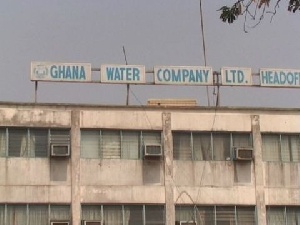The Ghana Water Company Limited (GWCL) says it will need close to US$2billion for planned projects spanning a ten-year period in order to offer and sustain the supply of urban water delivery.
“We need about US$2billion to make sure we achieve 100 percent coverage of all urban dwellers for the next 10 years,” Richard Appiah Otoo said.
Speaking at the 50th Anniversary symposium in Accra, Ing. Richard Appiah Otoo -- Chief Manager, Geographic Information Systems at GWCL -- pointed out that if they are able to acquire those funds they will be able to build the needed systems capacity and pipe infrastructure to supply water to more urban homes.
Utilities service providers have submitted a proposal to the Public Utilities Regulatory Commission (PURC), requesting for over a hundred percent tariff adjustment to enable them pay for services supplied and embark on several developmental projects to improve service delivery.
The Ghana Water Company Limited (GWCL) says it will continue to push the PURC to ensure it attains the needed 121 percent tariff adjustment.
“It is quite obvious that the tariff we pay now is very low. The quality of water that runs through our taps is world standard. All this also comes with the cost of chemicals, power, energy personnel maintenance, development of assets; all these come together to build up cost for the tariff we are proposing.”
The cost of producing a cubic metre of water -- GWCL claims -- is GH?8, which is making the company incur losses; also illegal mining activities are destroying the country’s water bodies, compelling GWCL to add more chemicals to treat the water at a huge cost.
Additionally, the company maintains that 50 percent of revenues are being used to pay electricity, coupled with government’s on-lending loan facility -- which means that the company has to pay back credit by itself.
Executive Secretary of Water Resources Commission, Ben Ankomah projected that the water demand for 2020 will rise to 5.13billion metres cubed, representing 13 percent of the surface water.
“In absolute terms we seem not to have a problem by way of quantity of water available to us to use. The problem has to do with the quality,” he said.
He explained that the Commission alongside the GWCL has in place a Water Quality Index, which covers 32 river stations and 9 reservoir/lake stations nationwide from 2005 to date, but conceded that the water quality started deteriorating in 2010-2014. “By the end of 2014, some of the water quality had become poor.”
Mr. Ankomah urged Ghanaians to treat water-bodies well, explaining that the pressures on water bodies result in loss of biodiversity, high disease prevalence rates, and associated high medical cost and high water treatment cost.
Business News of Friday, 16 October 2015
Source: B&FT
GWCL seeks US$2billion for next 10 years
Entertainment












